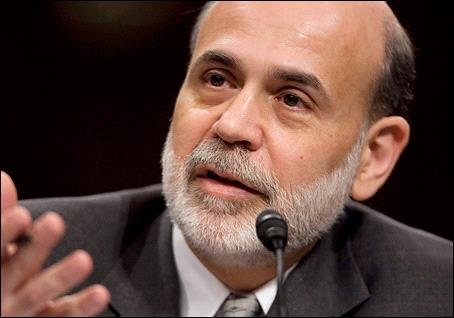Ammon News - Global markets have fallen sharply after the Federal Reserve signalled it may begin to scale back its stimulus of the US economy later this year.
On Wall Street, the Dow Jones dropped 354 points, or 2.3%, to close at 14,758, while the S&P 500 had its worst day since November 2011, shedding 2.5%.
European stock markets were down 3% or more by the close.
Other risky investments, such as bonds and commodities also fell, with short-term cash offering the only safe haven.
The dollar rose as markets anticipated US interest rates rising sooner than had been thought, while the yen fell.
Sustained slide
The markets were spooked after Fed chairman Ben Bernanke said that if the central bank's forecasts were correct, it could begin slowing down its "quantitative easing" programme of asset purchases by the end of 2013, and wind them down completely by the middle of 2014.
The end of the asset purchase programme would mark a return to the use of interest rates as the monetary policy weapon of choice.
The Fed has been buying bonds at a rate of $85bn (£54bn) a month, but believes it may be able to scale this back as the US economy recovers and end the programme next year.
The Fed has kept short-term interest rates in a range between zero and 0.25% since December 2008.
Although they are expected to remain close to zero for at least a couple more years, Mr Bernanke's comments raised market expectations that the short-term cost of borrowing would rise sooner than had previously been thought.
Mr Bernanke emphasised that the programme was tied to how well the US economy, and in particular the US jobs market, was doing.
However, his comments led to a widespread equity sell-off in the US late on Wednesday, with US markets down 1%.
The rest of the world followed suit on Thursday, with the market slide gaining momentum, with US markets falling further after they reopened.
Borrowing costs
The latest market sell-off continues a steady decline in share prices worldwide over the last month.
It repeats similar market sell-offs at the same point in the interest rate cycle in 2003 and in 1993-94 when investors started to anticipate a return to interest rate rises.
The expectation of rising interest rates also infected bond markets, which normally provide a safe haven from falls in the stock market.
The 10-year US Treasury bond fell sharply in price on Wednesday, causing its yield - the yearly return earned by investors and the implied cost of borrowing of the US government - to rise from 2.19% to 2.35%. On Thursday morning, the rate crept higher to 2.43%.
Borrowing costs also rose in other countries - particularly for debtors deemed by markets to be riskier, including recession-hit southern European countries such as Spain and Italy.
Even the yield on super-safe German government bonds edged higher, in part due to the widely perceived unwillingness of the European Central Bank to cut eurozone interest rates.
Chinese banks
Investors have also been rattled by events in China, where the country's economy appears to be slowing sharply, and its banking system is experiencing severe stress as the Chinese central bank seeks to rein in what the authorities increasingly see as the excessive and opaque lending of recent years.
With the central bank unwilling to make cheap loans easily available, the interest rate at which Chinese banks were willing to lend to each other overnight jumped to an unprecedented annualised 30% on Thursday.
The double-digit, reminiscent of the 2008 Western financial crisis, may imply a collapse of confidence in the interbank market as well as an unwillingness of the central bank to accommodate the banks.
There are widespread fears that the state-owned banks may be facing heavy losses on the glut of loans they rushed out over the last five years in order to keep the Chinese economy afloat despite the stagnation of its main Western export markets.
Evidence that both the US and Chinese central banks were taking their foot off the economic accelerator also depressed global commodities market.
China is the dominant consumer of many of the world's raw materials, particularly industrial metals, iron ore and other materials used in its construction boom.
The price of copper futures - a bellwether of Chinese demand - fell 2.4% and threatened to break through lows set in April.
Lost lustre
The prospect of higher interest rates in US dollars also translated into a stronger US currency.
All major currencies fell against the dollar, as did the price of precious metals.
Gold resumed its rout of recent months, dropping another 6% on Thursday. It is now down 28% since the apparent bubble in the metal burst in October.
The price of silver - the more volatile of the two - fell 6.4%.
The metals have proved popular among investors who fear that the Fed's money printing would eventually result in sharply rising prices - something that has as yet failed to materialise.
However, they failed to enjoy their traditional safe haven role in the current market turbulence - a role that has instead been usurped by US dollar cash.
